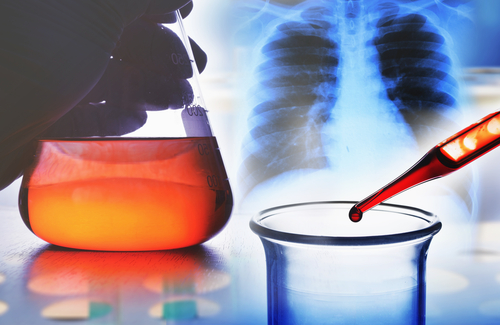Crystalline Silica-induced Lung Inflammation and Fibrosis Treated in Mice

Blocking a specific molecular target — 4-1BB — reduced crystalline silica-induced lung inflammation and, consequently, pulmonary fibrosis in animal models, researchers reported.
Inhaled crystalline silica is the main cause of silicosis, a condition characterized by chronic lung inflammation, and progressive and irreversible lung fibrosis. But the exact mechanisms by which crystalline silica induces pulmonary fibrosis is still unknown, and no therapy exists that can stop or reverse disease progression.
Silicosis treatment is focused on symptom management and supportive care.
The study, “Blocking the 4-1BB Pathway Ameliorates Crystalline Silica-induced Lung Inflammation and Fibrosis in Mice,” published in the journal Theranostics, aimed to understand the molecular mechanism of crystalline silica-induced pulmonary fibrosis in order to find possible treatment targets.
Researchers identified an increased expression of 4-1BB protein in the lungs of mice with induced-silicosis compared to healthy animals.
Importantly, the authors reported that, upon treatment with a specific inhibitor of the 4-1BB molecular pathway, crystalline silica-injured mice showed less lung inflammation and alveolar thickness. Further analysis indicated that the treated animals had reduced numbers of inflammatory-related immune cells. Compared to controls not given the inhibitor, these mice also showed low levels of pro-inflammatory proteins in their bronchoalveolar lavage fluid.
Fibrocytes, cells that circulate in the blood and can produce connective tissue proteins such as collagen, are important participants in the fibrotic process. This study also reported that fibrocyte numbers in crystalline silica-exposed lungs were reduced upon treatment with the 4-1BB molecular pathway inhibitor.
Additionally, the researchers saw fewer collagen deposits in the lungs of crystalline silica-injured but treated mice compared to control animals.
They concluded that by blocking the 4-1BB pathway they could promote a reduction in the crystalline silica-induced pro-inflammatory and pro-fibrotic status of the lung tissue.
This study highlights the importance of the 4-1BB molecular pathway and its relevance as a new possible therapeutic target for silicosis. But further studies are required to confirm the 4-1BB molecular pathway inhibitor has therapeutic applicability and safety in humans.
Importantly, the study opens to a better understanding of the mechanisms behind the origin and progression of crystalline silica-induced pulmonary fibrosis.







